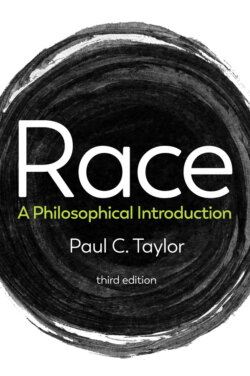Читать книгу Race - Paul C. Taylor - Страница 16
1.6.1 Bodies (appearance)
ОглавлениеTo borrow an image from an old and problematic but familiar metaphysic, “body” refers to the things our souls or minds travel around in. The body is the thing we try to alter with body-building or aesthetic surgery, the thing we cover and call attention to with clothes and jewelry (and colored contact lenses, and hairstyles, and so on). This is the human body as it figures into the world of, as philosophers sometimes say, medium-sized objects, which one can experience with the unaided human senses (without, say, a microscope).
A little more precisely: the body is the phenomenal aspect of human being. It is the way human being appears to the human senses. I put the point this generally because I mean to avoid focusing too closely on the sense of sight, though this is particularly tempting when it comes to race in places like the US. Focusing just on the visible dimensions of these social identities threatens to obscure the way other senses get mobilized for our racial practices. For example, language and speaking style often serve as markers of racial identity. We’ll say more about this – and about how this works when algorithms code racism into our virtual worlds – in a later chapter.
Two things are particularly interesting about human bodies in this regard. First, perception, the receipt of information through the physiological pathways that we call the senses, is always culturally mediated. Racial perceptions are no different, though they are more interesting and more significant than many others. And second, as feminist scholars and others have pointed out for over a hundred years, and as my references to bodybuilding and the like show, human bodies are particularly effective bearers of meaning. Race-thinking, even at the level of language, reflects an aspect of this broader fact of human association.
